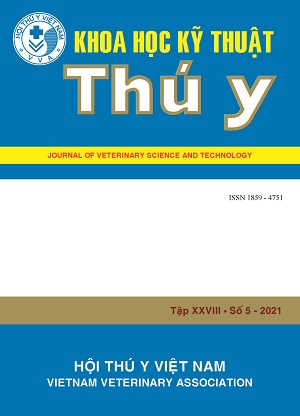Phylogenetic analysis and genetic characteristics of Avian influenza H5N6 virus strains isolated in Viet Nam in 2014-2015
Abstract
Highly pathogenic avian influenza (HPAI) H5N6 virus was detected in poultry flocks in Viet Nam
at the end of 2013, these virus strains caused serious economic loss for the poultry husbandry
industry in the country. So far, the outbreaks caused by influenza A/H5N6 virus strains have still
occurred scatteredly throughout the territory of Viet Nam. Genetic characteristics and phylogenetic
analysis of 5 H5N6 virus strains which were isolated in 2014-2015 and currently kept at the National
Institute of Veterinary Research showed that, these virus strains were highly virulent and belonged
to clade 2.3.4.4. There were 4 out of 5 H5N6 virus strains appeared a fragmentary mutation at the
positions 49-68 in the NA gene and all 5 virus strains possessed a T160A mutation in the HA gene,
these mutations have the ability to increase binding with receptors form on human cells and enhance
virulence of the virus. These viruses have the potential to infect humans through direct contact; so
far the presence of the highly pathogenic H5N6 virus has raised the concerns about the pandemic

